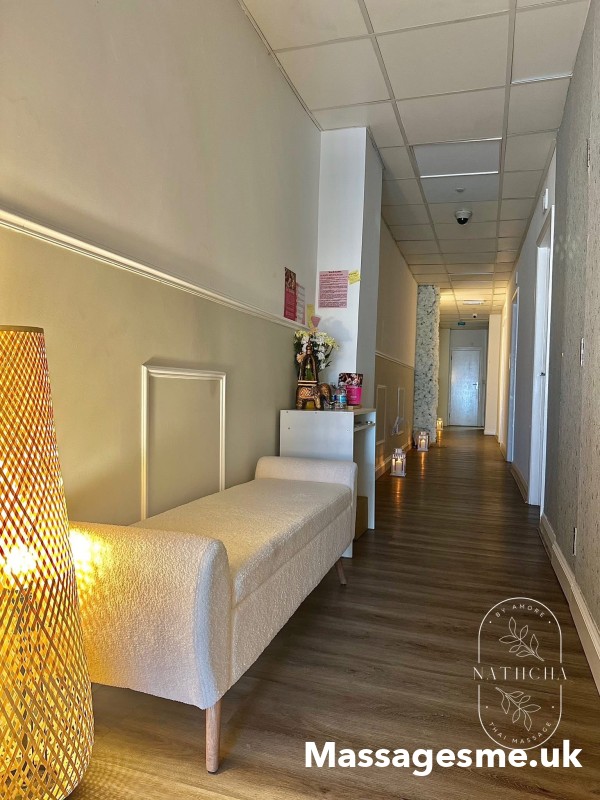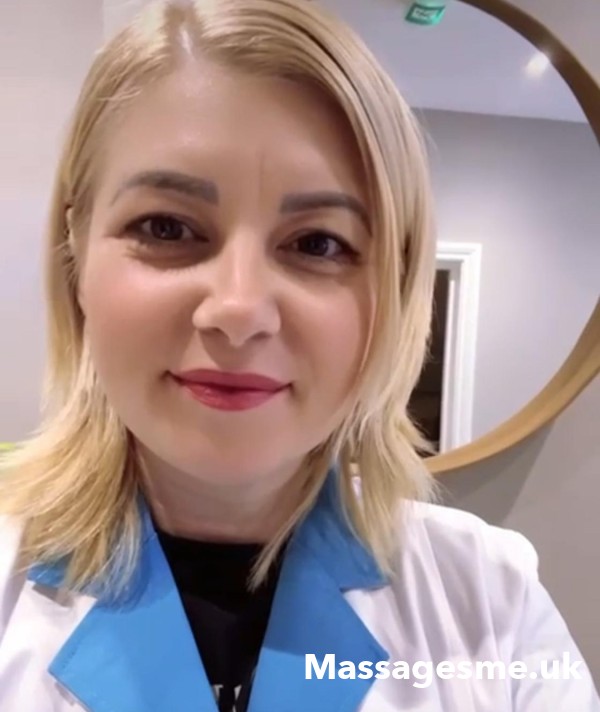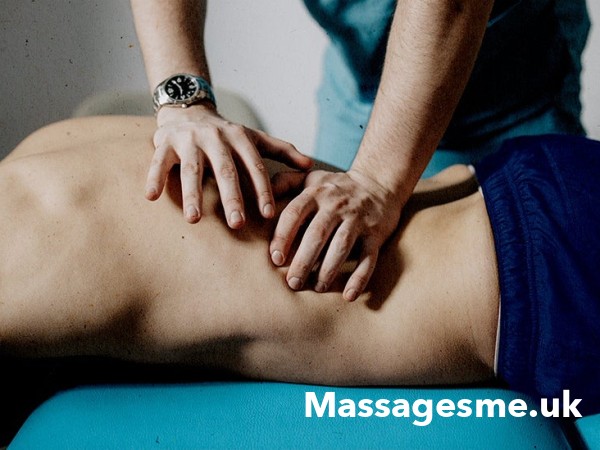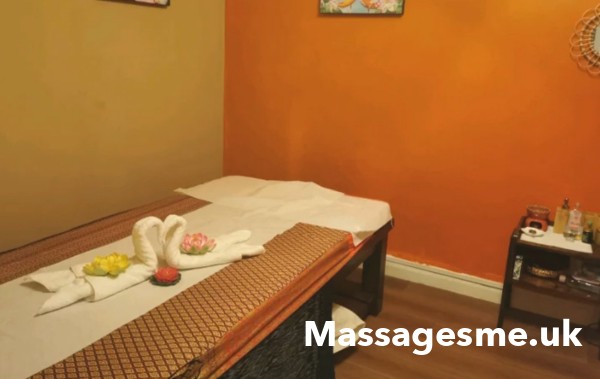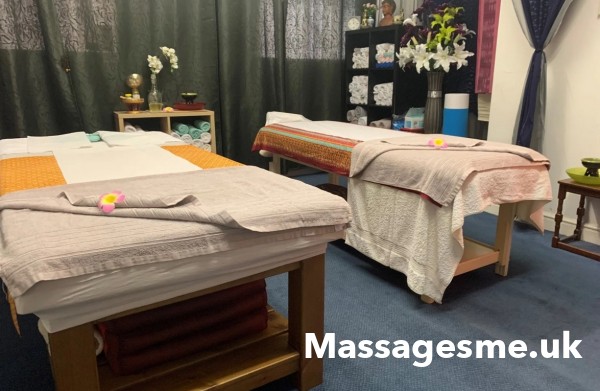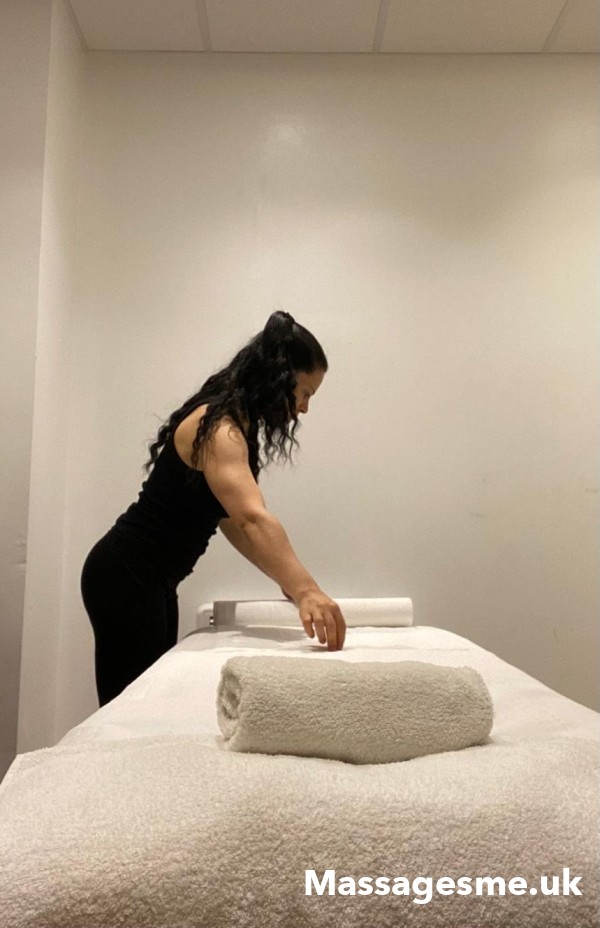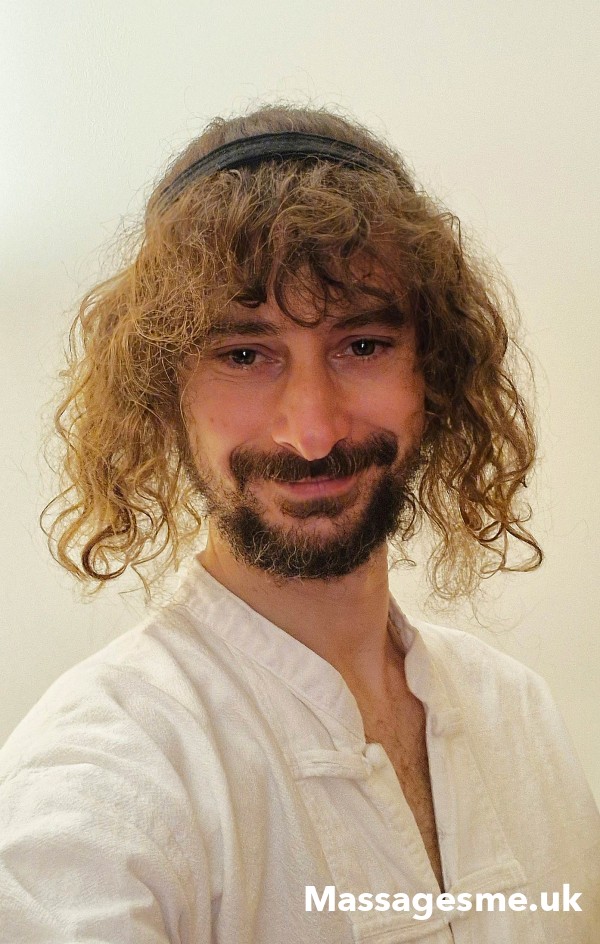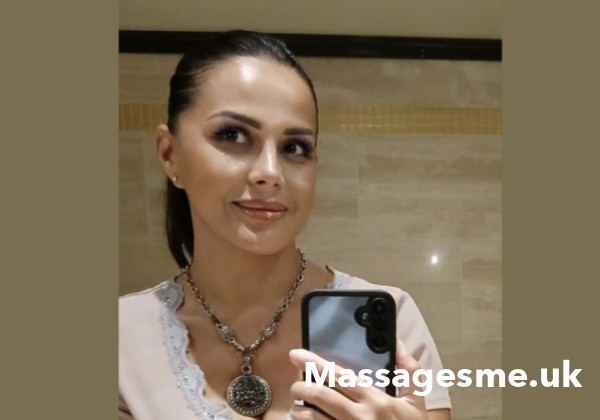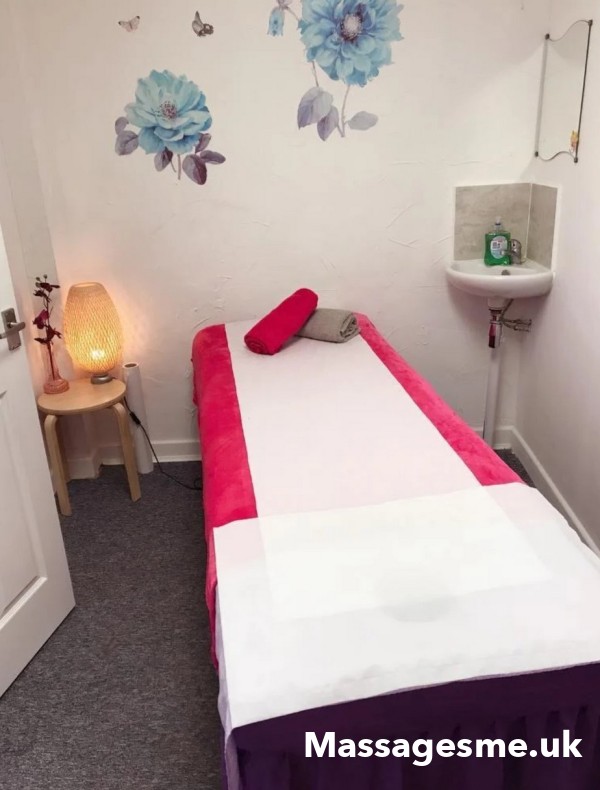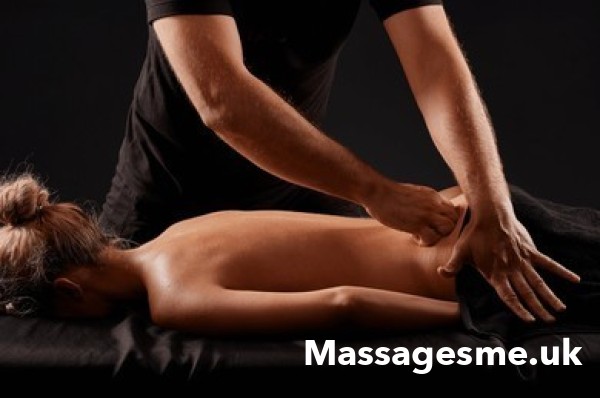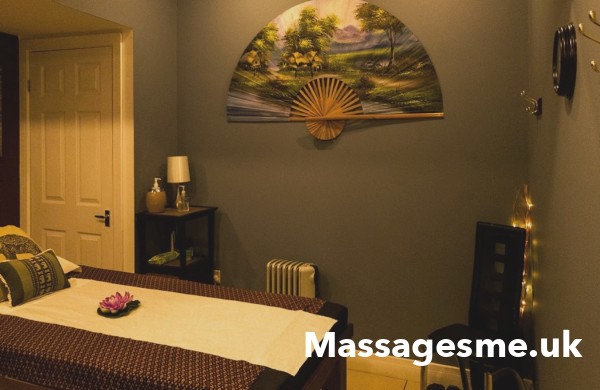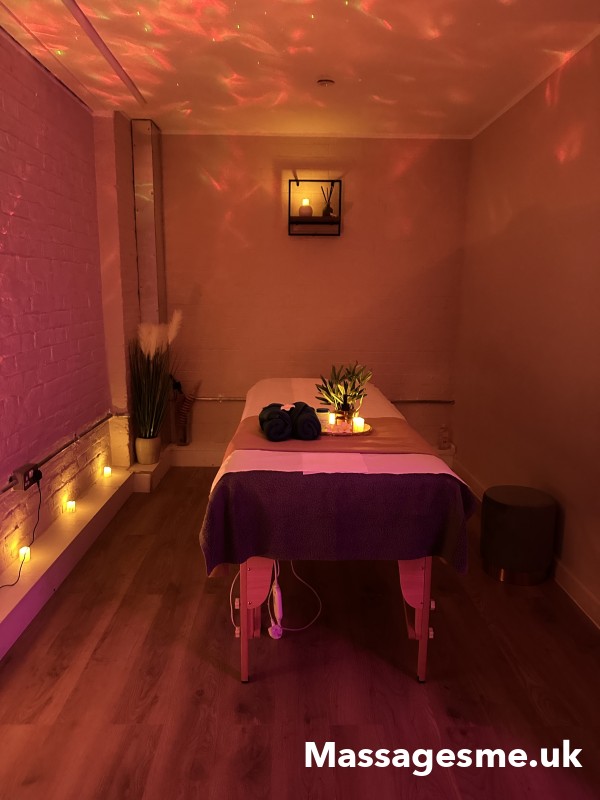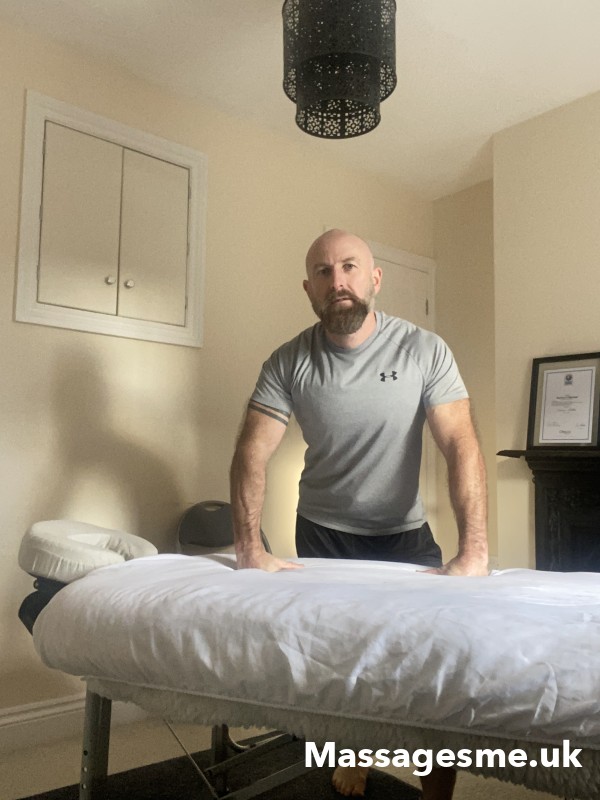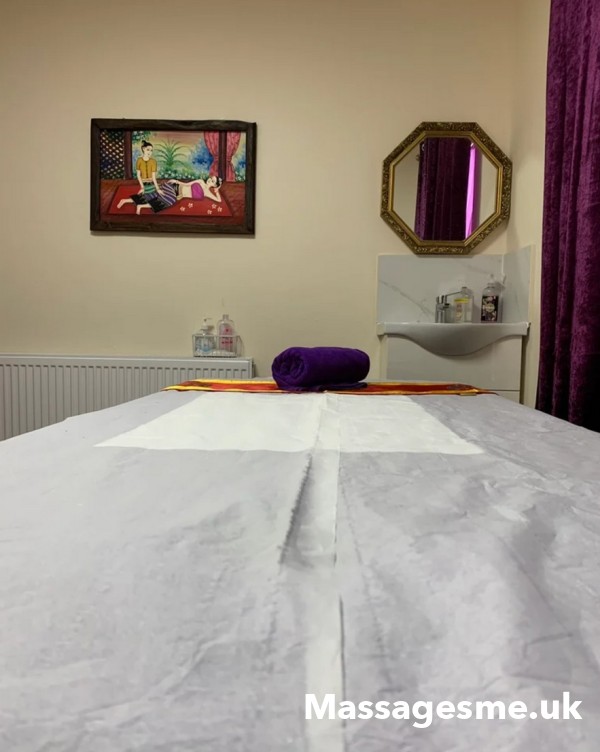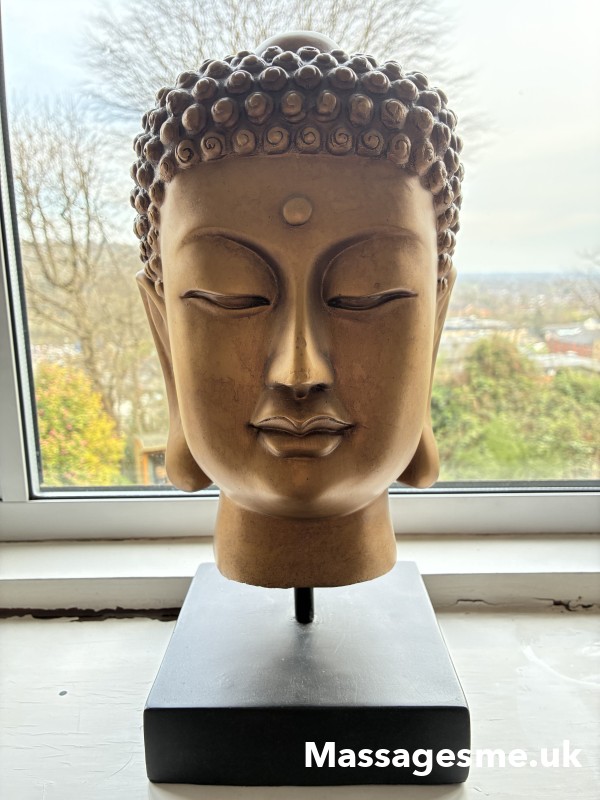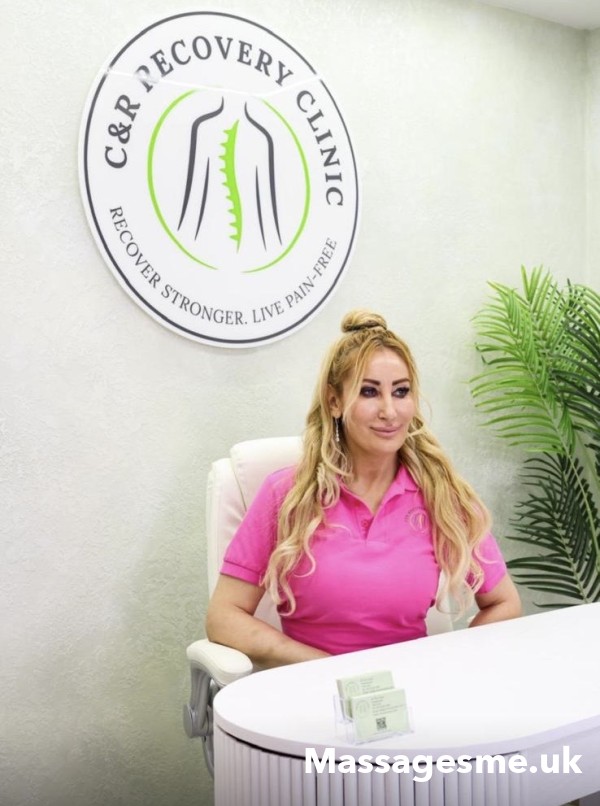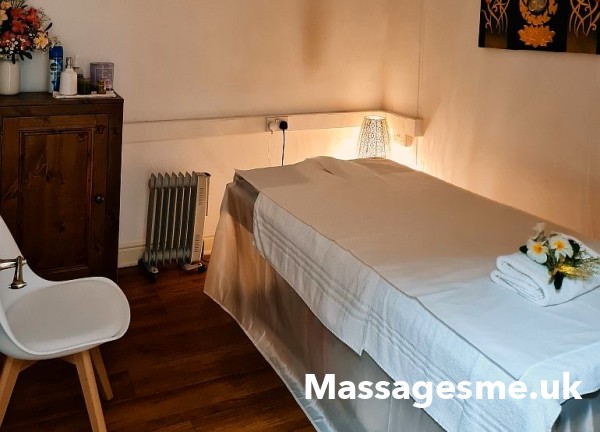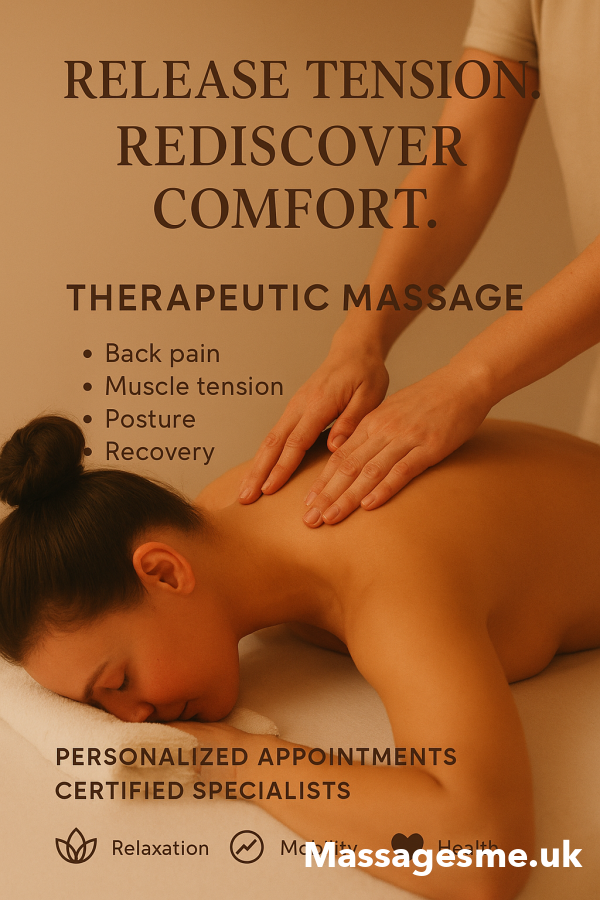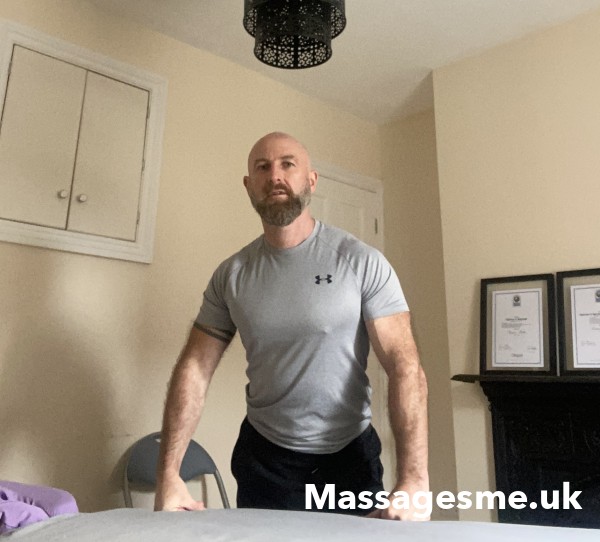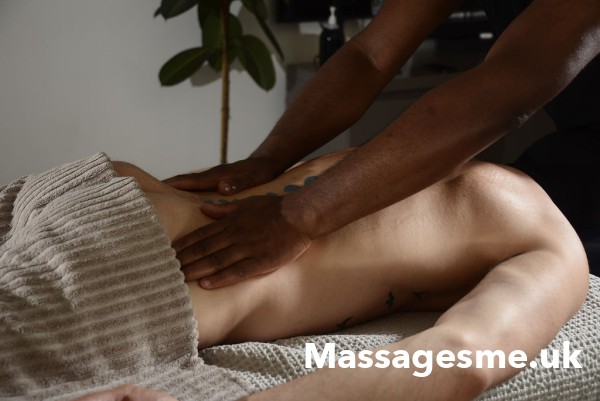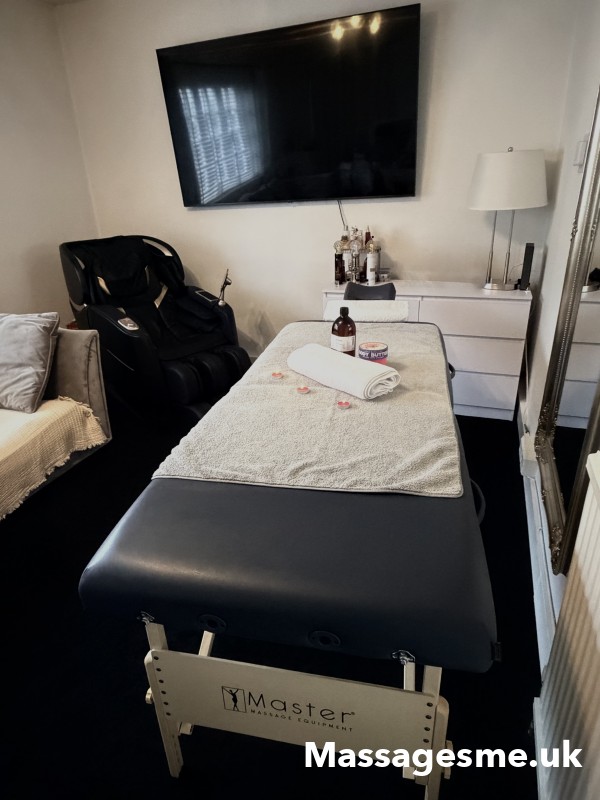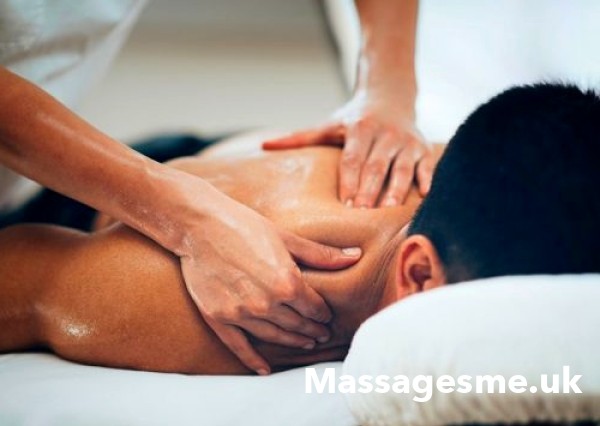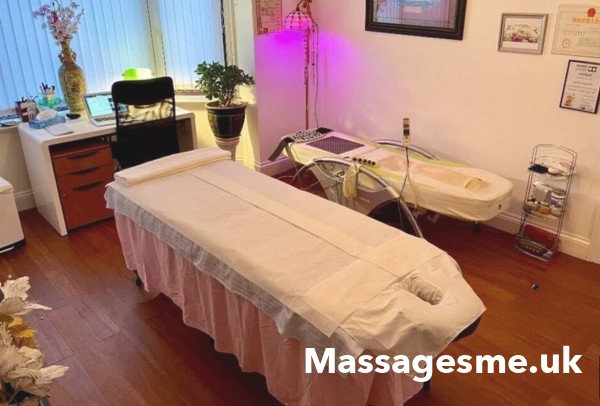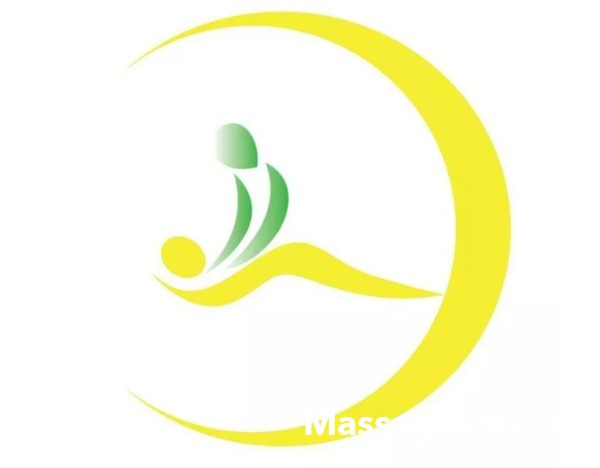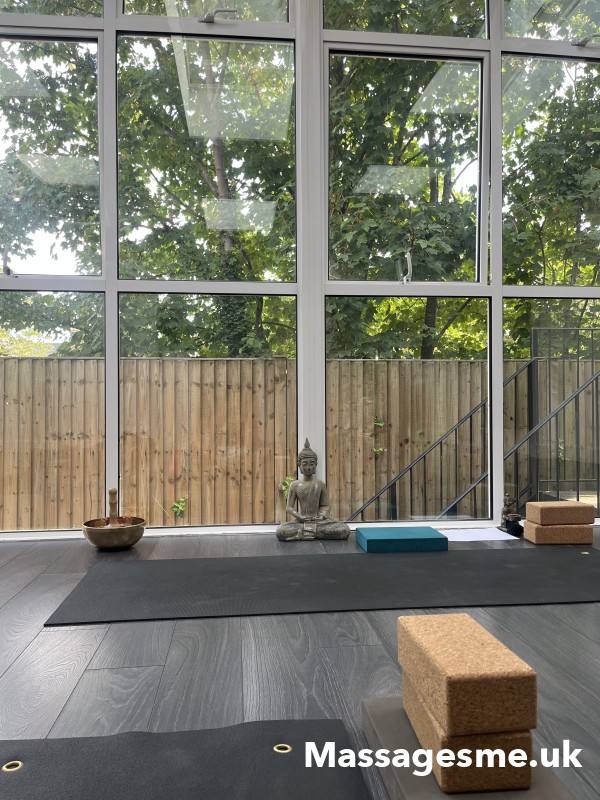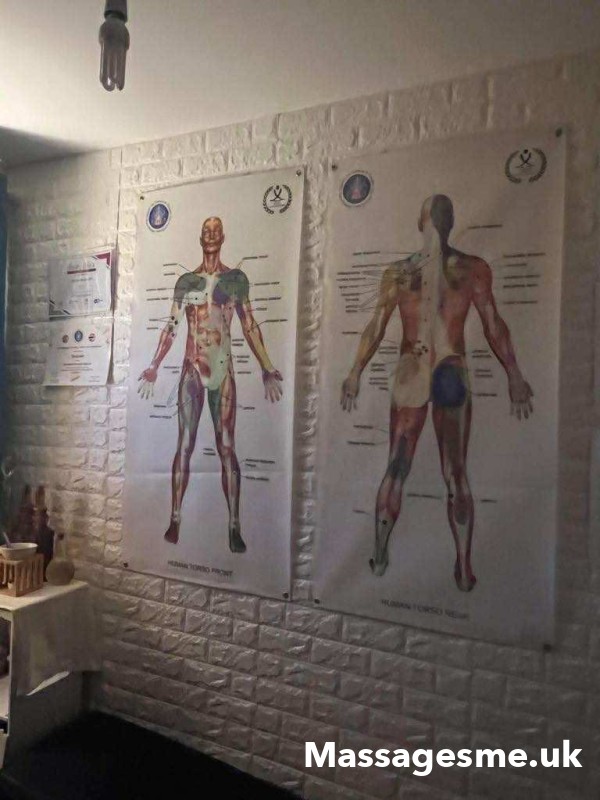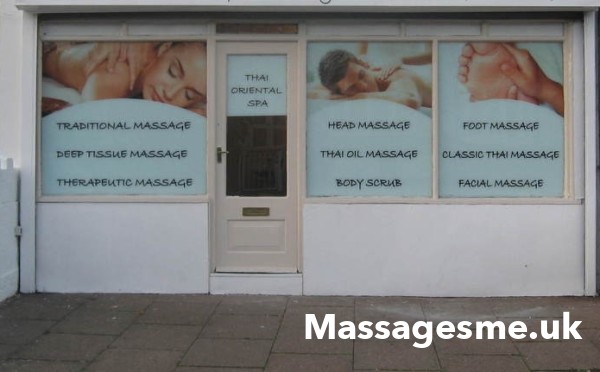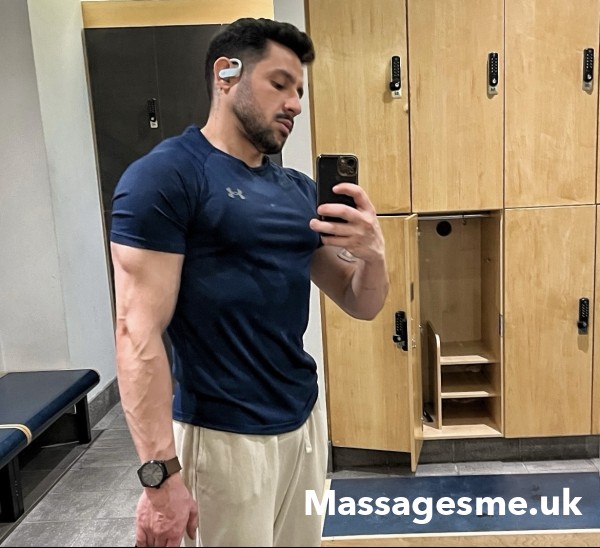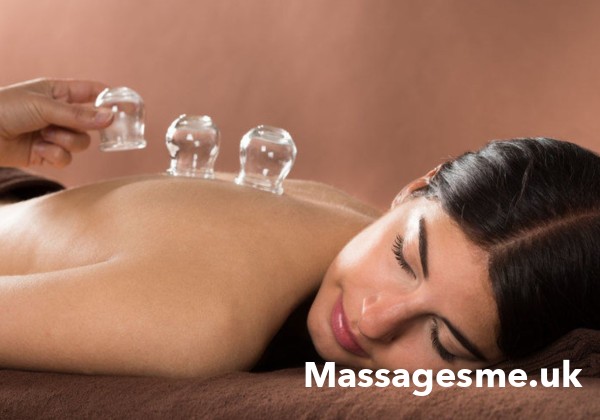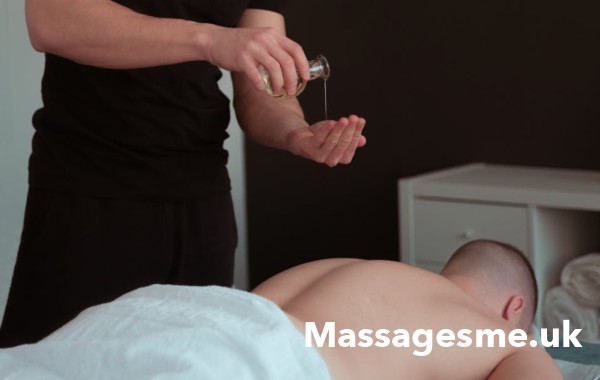Deep tissue massage represents the gold standard of therapeutic bodywork, employing sophisticated manual therapy techniques to address chronic musculoskeletal dysfunction, myofascial restrictions, and complex pain patterns that affect millions of individuals across the United Kingdom.
It is important to note that this advanced therapeutic modality transcends superficial relaxation, utilising targeted pressure, specific anatomical knowledge, and evidence-based techniques to create lasting structural and functional improvements in muscle tissue, fascial networks, and movement patterns throughout the body.
Understanding Deep Tissue Massage: Advanced Therapeutic Bodywork
Deep tissue massage represents a sophisticated therapeutic discipline that combines advanced anatomical knowledge with precise manual therapy techniques to address complex musculoskeletal dysfunction. Unlike relaxation massage modalities that focus primarily on stress reduction and general wellbeing, deep tissue massage specifically targets chronic muscle tension, fascial restrictions, adhesions, and dysfunctional movement patterns that contribute to pain, reduced mobility, and compromised quality of life.
This therapeutic approach operates on multiple anatomical levels simultaneously, addressing not only individual muscle fibres but also the interconnected fascial networks, tendon attachments, and neuromuscular patterns that influence overall body function. Through the application of sustained pressure, specific directional techniques, and targeted intervention strategies, deep tissue massage facilitates structural reorganisation and functional improvement that extends far beyond the treatment session itself.
Physiological Mechanisms of Deep Tissue Massage
Contemporary research has identified multiple physiological mechanisms explaining deep tissue massage's therapeutic effects:
Validated Therapeutic Mechanisms:
- Fascial Release and Reorganisation: Sustained pressure promotes viscoelastic deformation of fascial tissue, improving tissue quality and reducing restrictions
- Myofascial Trigger Point Deactivation: Targeted pressure interrupts pain-referral patterns and restores normal muscle function
- Enhanced Tissue Perfusion: Mechanical stimulation increases local blood flow by 200-400%, promoting healing and waste removal
- Neurological Pain Modulation: Activation of mechanoreceptors inhibits pain signals through gate control mechanisms
- Inflammatory Response Regulation: Treatment modulates inflammatory mediators, reducing chronic inflammation whilst promoting healing
- Tissue Remodelling Stimulation: Mechanical stress promotes collagen synthesis and tissue reorganisation for improved function
Advanced Deep Tissue Massage Techniques and Applications
Professional deep tissue massage encompasses a comprehensive range of specialised techniques, each designed to address specific tissue dysfunction patterns and therapeutic objectives.
Longitudinal Stripping Techniques
Systematic application of sustained pressure along muscle fibre direction to address chronic tension patterns and fascial restrictions. Utilises thumbs, forearms, or specialised tools to create controlled tissue deformation and promote functional lengthening of shortened muscle groups.
Cross-Fibre Friction Protocols
Transverse pressure application across muscle fibres to break down adhesions, improve tissue mobility, and promote proper collagen alignment during healing. Particularly effective for tendon dysfunction, scar tissue management, and chronic muscle tension patterns.
Trigger Point Release Therapy
Targeted pressure application to myofascial trigger points using sustained compression, ischaemic pressure, or positional release techniques. Addresses both active trigger points (causing current pain) and latent trigger points (predisposing to dysfunction).
Myofascial Release Integration
Gentle sustained pressure combined with movement to address fascial restrictions and restore three-dimensional tissue mobility. Recognises the interconnected nature of fascial networks and their influence on posture and movement patterns.
Specialised Deep Tissue Applications
- Sports Injury Rehabilitation: Targeted treatment for athletic injuries, overuse syndromes, and performance optimisation
- Chronic Pain Management: Comprehensive approaches for fibromyalgia, chronic fatigue syndrome, and persistent pain conditions
- Postural Dysfunction Correction: Address workplace-related tension patterns and postural imbalances
- Post-Surgical Recovery: Scar tissue management and tissue mobilisation following orthopaedic procedures
- Neurological Rehabilitation: Spasticity management and movement facilitation for neurological conditions
- Occupational Health Applications: Treatment of repetitive strain injuries and work-related musculoskeletal disorders
Clinical Evidence and Research Validation
Extensive research has established deep tissue massage's efficacy across numerous musculoskeletal conditions, with systematic reviews and randomised controlled trials providing robust evidence for its therapeutic applications.
Conditions with Strong Research Support
Category 1: Robust Clinical Evidence
- Chronic Lower Back Pain: Significant pain reduction and functional improvement (effect sizes 0.6-0.8)
- Fibromyalgia Management: Reduced pain intensity, improved sleep quality, and enhanced quality of life measures
- Tension Headaches: Decreased frequency and intensity of cervicogenic and tension-type headaches
- Neck and Shoulder Pain: Improved range of motion and pain reduction in chronic cervical dysfunction
- Athletic Recovery: Enhanced muscle recovery and reduced delayed onset muscle soreness (DOMS)
- Osteoarthritis Symptoms: Pain reduction and improved joint mobility in knee and hip osteoarthritis
Category 2: Emerging Evidence
- Hypertension Management: Modest blood pressure reductions in mild to moderate hypertension
- Immune Function Enhancement: Improved immune markers and reduced stress hormone levels
- Sleep Quality Improvement: Better sleep patterns and reduced sleep disturbances
- Anxiety and Depression: Mood improvements and stress reduction in clinical populations
- Scar Tissue Management: Improved tissue mobility and reduced scar-related restrictions
Comparative Effectiveness Research
Studies comparing deep tissue massage with other therapeutic interventions demonstrate superior outcomes for specific conditions:
- Versus Swedish Massage: Greater pain reduction and functional improvement for chronic conditions
- Versus Conventional Physiotherapy: Comparable outcomes with enhanced patient satisfaction
- Versus Medication Management: Sustained benefits without pharmaceutical side effects
- As Adjunctive Therapy: Enhanced outcomes when combined with exercise therapy and other interventions
What to Expect During Professional Deep Tissue Massage Treatment
Professional deep tissue massage sessions follow structured clinical protocols ensuring optimal therapeutic outcomes whilst maintaining patient comfort and safety.
Comprehensive Assessment Process
Initial appointments include a thorough evaluation covering:
- Detailed Pain History: Onset, duration, aggravating factors, and previous treatment responses
- Functional Assessment: Movement analysis, postural evaluation, and activity limitations
- Palpatory Examination: Tissue quality assessment, trigger point identification, and tension pattern mapping
- Range of Motion Testing: Joint mobility and muscle flexibility measurements
- Goal Setting: Collaborative establishment of realistic treatment objectives and timelines
- Treatment Planning: Individualised protocol development based on assessment findings
Treatment Session Structure
Professional deep tissue massage sessions typically follow this protocol:
- Preparation Phase (5-10 minutes): Client positioning, tissue assessment, and treatment area preparation
- Warm-Up Techniques (10-15 minutes): Superficial massage to prepare tissues for deeper work
- Deep Tissue Application (30-45 minutes): Targeted techniques addressing specific dysfunction patterns
- Integration and Stretching (10-15 minutes): Movement integration and flexibility enhancement
- Cool-Down and Assessment (5-10 minutes): Gentle techniques and treatment response evaluation
- Home Care Instructions (5 minutes): Exercise recommendations and self-care guidance

Pain Management and Communication Protocols
Effective deep tissue massage requires sophisticated pain management and communication strategies:
Understanding Therapeutic Discomfort
Beneficial Discomfort (6-7/10): Productive sensation indicating tissue release and therapeutic progress. Often described as "good pain" or "necessary discomfort."
Excessive Pain (8+/10): Counterproductive sensation indicating potential tissue damage or protective muscle guarding. Requires immediate pressure reduction or technique modification.
Communication Scale: 1-3 (too light), 4-5 (building pressure), 6-7 (therapeutic zone), 8-10 (excessive pressure). Optimal treatment occurs in the 6-7 range.
Post-Treatment Recovery and Tissue Response
Understanding normal post-treatment responses helps clients maximise therapeutic benefits whilst recognising appropriate healing patterns.
Normal Post-Treatment Responses
24-48 Hours Post-Treatment:
- Muscle Soreness: Similar to post-exercise soreness, indicating tissue remodelling
- Increased Thirst: Metabolic response requiring enhanced hydration
- Temporary Fatigue: Parasympathetic activation promoting rest and recovery
- Emotional Release: Occasional emotional responses as tension patterns resolve
- Improved Mobility: Enhanced range of motion and reduced stiffness
3-7 Days Post-Treatment:
- Progressive Improvement: Gradual pain reduction and functional enhancement
- Tissue Adaptation: Continued remodelling and strengthening processes
- Movement Integration: Improved movement patterns and postural awareness
- Sustained Benefits: Lasting improvements in targeted dysfunction areas
Optimising Recovery and Treatment Benefits
- Hydration Protocol: Increase water intake by 50% for 48 hours post-treatment
- Gentle Movement: Light activity and stretching to promote circulation and prevent stiffness
- Heat Application: Warm baths or heat packs to enhance circulation and comfort
- Rest and Recovery: Adequate sleep and stress management to support healing
- Follow-Up Care: Adherence to home exercise programmes and self-care recommendations
Professional Standards and Safety Protocols
Deep tissue massage safety and effectiveness depend on practitioner qualifications, proper technique application, and adherence to established clinical protocols.
Practitioner Qualification Requirements
- Advanced Massage Therapy Certification: Recognised qualifications from accredited institutions with minimum 500 hours training
- Anatomy and Physiology Knowledge: Comprehensive understanding of musculoskeletal systems and pathophysiology
- Deep Tissue Specialisation: Additional training in advanced techniques and therapeutic applications
- Continuing Professional Development: Ongoing education in current research and technique refinement
- Professional Insurance: Comprehensive coverage including deep tissue and therapeutic massage applications
- Clinical Experience: Demonstrated proficiency in treating complex musculoskeletal conditions
Contraindications and Special Precautions
While generally safe when properly administered, certain conditions require careful consideration or contraindicate deep tissue massage:
Absolute Contraindications:
- Acute injury or inflammation in treatment areas (first 48-72 hours)
- Suspected fractures, dislocations, or severe soft tissue trauma
- Active deep vein thrombosis or pulmonary embolism risk
- Severe osteoporosis or bone fragility conditions
- Active cancer in treatment areas or widespread metastatic disease
- Severe cardiovascular conditions or uncontrolled hypertension
Relative Contraindications (Requiring Modified Approach):
- Pregnancy (particularly first trimester and high-risk pregnancies)
- Recent surgery or medical procedures in treatment areas
- Chronic pain conditions requiring gentle approaches initially
- Medication affecting pain perception or tissue healing
- Psychological trauma with touch sensitivity
- Autoimmune conditions affecting tissue healing
Deep Tissue Massage Pricing and Value Considerations
Understanding deep tissue massage pricing helps clients make informed decisions about this therapeutic investment whilst ensuring access to qualified practitioners and professional treatment standards.
UK Deep Tissue Massage Pricing (2025)
Professional Spa and Clinic Pricing:
- 60-Minute Session: £60-£120 reflecting therapist expertise and facility standards
- 90-Minute Session: £90-£180 for comprehensive treatment protocols
- Initial Assessment (90-120 minutes): £80-£150 including evaluation and first treatment
Mobile Therapist Pricing:
- 60-Minute Home Session: £45-£90 plus travel charges
- 90-Minute Home Session: £70-£135 plus travel charges
- Travel Charges: £5-£20 depending on distance and location
Regional Pricing Variations:
- London Central: £80-£150 per session reflecting premium location costs
- Major Cities (Manchester, Edinburgh, Birmingham): £60-£100 per session
- Regional Towns: £50-£80 per session with competitive pricing
- Rural Areas: £45-£70 per session offering accessible therapeutic care
Value Factors and Investment Considerations
- Practitioner Expertise: Advanced qualifications and specialisation warrant premium pricing
- Treatment Complexity: Chronic conditions requiring extended protocols justify higher costs
- Facility Standards: Professional clinics with advanced equipment provide enhanced value
- Long-Term Benefits: Chronic condition resolution provides significant cost savings versus ongoing medical care
- Package Options: Multiple session commitments often provide 10-15% cost savings
- Insurance Coverage: Some private health insurance policies cover therapeutic massage
Integration with Healthcare and Other Therapies
Deep tissue massage increasingly integrates with conventional medical treatment and other therapeutic modalities, providing enhanced outcomes for complex musculoskeletal conditions.
Healthcare Integration Examples
- Physiotherapy Clinics: Complementary treatment enhancing exercise therapy and rehabilitation outcomes
- Sports Medicine Centres: Injury prevention and performance optimisation for athletes
- Pain Management Programmes: Non-pharmaceutical intervention for chronic pain conditions
- Occupational Health Services: Workplace injury prevention and treatment programmes
- Rehabilitation Centres: Post-surgical recovery and movement restoration protocols
Synergistic Treatment Combinations
Deep tissue massage combines effectively with various therapeutic modalities:
- With Acupuncture: Enhanced pain relief and tissue healing through multiple therapeutic pathways
- With Cupping Therapy: Comprehensive myofascial release and circulation enhancement
- With Exercise Therapy: Improved movement quality and exercise tolerance
- With Chiropractic Care: Enhanced joint mobility and structural alignment
- With Aromatherapy: Stress reduction and enhanced relaxation responses
Client Experiences and Treatment Outcomes
"After 20 years as a construction worker, chronic back pain had become my constant companion. Traditional medical treatments provided only temporary relief until I discovered deep tissue massage. My therapist's anatomical knowledge and targeted approach addressed muscle imbalances I didn't even know existed. Six months of regular treatments have given me my life back—I'm pain-free for the first time in years and can play with my grandchildren again." — Robert Harrison, Construction Foreman, Newcastle
"As a professional violinist, repetitive strain injuries threatened to end my career. Deep tissue massage became the cornerstone of my recovery programme, addressing not just the symptoms but the underlying muscular imbalances causing my problems. The precision and knowledge my therapist brought to each session was remarkable—understanding exactly how my instrument affected my body mechanics and developing targeted treatments accordingly." — Dr. Sarah Mitchell, Principal Violinist, London Symphony Orchestra
"Fibromyalgia had controlled my life for over a decade, with constant pain and fatigue limiting everything I could do. Deep tissue massage, initially gentle and gradually intensifying, has significantly improved my condition. My therapist's understanding of chronic pain conditions and patient approach has been life-changing. I now manage my condition proactively rather than simply enduring it." — Linda Thompson, Retired Teacher, Edinburgh
"Following a serious car accident, scar tissue and muscle restrictions severely limited my mobility. Deep tissue massage played a crucial role in my rehabilitation, systematically addressing adhesions and movement restrictions that conventional physiotherapy couldn't reach. The combination of skilled technique and compassionate care helped me regain function I thought was lost forever." — Captain Mark Stevens, RAF (Retired), Gloucester
Therapeutic Oils and Treatment Enhancement
Professional oil selection significantly impacts deep tissue massage effectiveness, with different formulations offering specific therapeutic benefits and application characteristics.
Professional-Grade Massage Oils
- Jojoba Oil: Excellent penetration properties and non-comedogenic characteristics ideal for sensitive skin
- Sweet Almond Oil: Superior glide and moderate absorption providing optimal working consistency
- Grapeseed Oil: Light texture with antioxidant properties suitable for extended treatment sessions
- Coconut Oil (Fractionated): Antimicrobial properties and excellent skin conditioning benefits
- Sunflower Oil: High vitamin E content supporting tissue healing and skin health
Therapeutic Essential Oil Integration
- Wintergreen and Peppermint: Natural analgesic and anti-inflammatory properties for pain relief
- Eucalyptus and Rosemary: Circulation enhancement and mental clarity promotion
- Lavender and Chamomile: Anxiety reduction and nervous system calming effects
- Arnica and Helichrysum: Bruise prevention and tissue healing acceleration
- Black Pepper and Ginger: Warming effects and circulation stimulation
Frequently Asked Questions
How painful should deep tissue massage be?
Effective deep tissue massage should produce therapeutic discomfort in the 6-7 range on a 10-point scale—noticeable and productive but not excruciating. Pain above 7/10 is counterproductive and may cause protective muscle guarding. Professional therapists constantly monitor client comfort and adjust pressure accordingly. Remember: "no pain, no gain" is a dangerous myth in therapeutic massage.
How often should I receive a deep tissue massage for chronic conditions?
Treatment frequency depends on condition severity and therapeutic objectives. Acute issues may require weekly sessions for 4-6 weeks, while chronic conditions often benefit from bi-weekly treatments initially, followed by monthly maintenance. Your therapist will develop an individualised treatment plan based on your response and progress toward functional goals.
Is soreness after deep tissue massage normal?
Mild to moderate soreness 24-48 hours post-treatment is normal and indicates therapeutic tissue response. This resembles post-exercise soreness and typically resolves within 2 to 3 days. However, severe pain, persistent swelling, or worsening symptoms require immediate communication with your therapist and possible medical evaluation.
Can deep tissue massage help with chronic pain conditions like fibromyalgia?
Research demonstrates significant benefits for fibromyalgia and other chronic pain conditions when deep tissue massage is appropriately modified. Treatment typically begins gently and gradually increases intensity as tolerance improves. Many clients experience reduced pain levels, improved sleep quality, and enhanced quality of life with regular treatment.
What qualifications should I look for in a deep tissue massage therapist?
Seek therapists with advanced massage therapy certification (minimum 500 hours), specific deep tissue training, strong anatomy knowledge, and experience treating your condition type. Professional body membership, continuing education evidence, and positive client testimonials indicate that practitioners are of high quality. Never hesitate to ask about qualifications and treatment approaches.
Can I receive a deep tissue massage if I'm taking blood-thinning medication?
Blood-thinning medications require modified approaches due to increased bruising risk and potential complications. Always inform your therapist about all medications and consult your prescribing physician before beginning treatment. Modified techniques can often provide therapeutic benefits whilst maintaining safety protocols.
Professional Development and Advanced Training
The field of deep tissue massage continues evolving through advanced training programmes, research developments, and integration with other therapeutic disciplines.
Advanced Certification Pathways
- Neuromuscular Therapy Certification: Specialisation in trigger point therapy and myofascial pain syndromes
- Structural Integration Training: Advanced fascial work and postural improvement protocols
- Sports Massage Specialisation: Athletic population focus with performance optimisation techniques
- Medical Massage Certification: Healthcare integration and pathology-specific treatment approaches
- Chronic Pain Management Training: Specialised approaches for persistent pain conditions
Research and Innovation Trends
- Fascial Research Advances: Enhanced understanding of connective tissue properties and treatment approaches
- Pain Science Integration: Application of current pain research to therapeutic massage protocols
- Technology Integration: Ultrasound imaging and pressure monitoring devices enhancing treatment precision
- Outcome Measurement Tools: Digital platforms tracking treatment progress and functional improvements
- Evidence-Based Practice: Systematic integration of research findings into clinical practice protocols
The Future of Deep Tissue Massage in UK Healthcare
Deep tissue massage's integration within UK healthcare continues expanding through increased research validation, professional recognition, and growing acceptance within evidence-based medicine frameworks.
Current Development Trends
- NHS Integration Pilots: Selected NHS trusts incorporating massage therapy into chronic pain management programmes
- Professional Regulation Development: Advancement toward statutory regulation of massage therapy practice
- Research Funding Increases: Growing investment in massage therapy research through academic institutions
- Technology-Enhanced Practice: Integration of digital health platforms and outcome measurement tools
- Interprofessional Collaboration: Enhanced cooperation between massage therapists and other healthcare professionals
- Preventive Healthcare Recognition: Acknowledgment of massage therapy's role in injury prevention and wellness maintenance
Self-Care and Home Maintenance Strategies
Maximising deep tissue massage benefits requires active participation in self-care protocols and home maintenance strategies between professional treatment sessions.
Daily Self-Care Protocols
- Hydration Maintenance: Consistent water intake supporting tissue health and toxin elimination
- Gentle Stretching Routines: Targeted stretches maintaining flexibility gains achieved during treatment
- Heat and Cold Therapy: Strategic application for pain management and inflammation control
- Stress Management Practices: Meditation, breathing exercises, and relaxation techniques
- Ergonomic Improvements: Workplace and home environment modifications reducing repetitive stress
- Sleep Hygiene Optimisation: Quality rest supporting tissue healing and recovery processes
Exercise Integration and Movement Quality
- Corrective Exercise Programmes: Targeted exercises addressing muscle imbalances identified during treatment
- Functional Movement Training: Activities improving daily movement patterns and reducing injury risk
- Cardiovascular Conditioning: Aerobic exercise supporting overall tissue health and circulation
- Strength Training Integration: Progressive resistance exercise supporting structural improvements
- Mind-Body Movement: Yoga, Pilates, or Tai Chi, enhancing body awareness and movement quality
Professional Ethics and Client Care Standards
Ethical deep tissue massage practice requires adherence to professional standards, appropriate boundaries, and client-centred care approaches, ensuring optimal therapeutic relationships.
Professional Boundary Management
- Informed Consent Protocols: Clear explanation of procedures, risks, and expected outcomes
- Privacy and Dignity Maintenance: Appropriate draping and professional behaviour throughout treatment
- Communication Standards: Regular check-ins regarding comfort, pressure, and treatment progress
- Scope of Practice Adherence: Recognition of limitations and appropriate referral to other healthcare providers
- Continuing Education Commitment: Ongoing learning to maintain current knowledge and skills
- Professional Development: Regular supervision and peer consultation supporting practice quality
Conclusion: Embracing Therapeutic Excellence Through Deep Tissue Massage
Deep tissue massage represents the pinnacle of therapeutic bodywork, combining advanced anatomical knowledge with sophisticated manual therapy techniques to address complex musculoskeletal dysfunction and chronic pain conditions. Through its evidence-based approach and focus on lasting functional improvement, deep tissue massage offers individuals suffering from chronic pain, movement restrictions, and tissue dysfunction a pathway to significant health improvement and enhanced quality of life.
The key to successful deep tissue massage outcomes lies in working with appropriately qualified practitioners who possess both technical expertise and compassionate understanding of individual client needs. When integrated thoughtfully within comprehensive healthcare plans, deep tissue massage provides measurable benefits that extend far beyond temporary symptom relief, creating lasting structural and functional improvements that support long-term health and wellbeing.
Whether addressing chronic pain conditions, sports injuries, or workplace-related dysfunction, deep tissue massage offers a scientifically validated therapeutic intervention that honours both the complexity of human anatomy and the individual's unique healing journey. Through platforms like Massages Me UK, accessing qualified practitioners and beginning your therapeutic massage journey has never been more straightforward or reliable.
Begin Your Deep Tissue Massage Treatment Journey
Discover the transformative benefits of professional deep tissue massage by connecting with qualified therapeutic massage practitioners through Massages Me UK. Our comprehensive platform features experienced therapists specialising in advanced deep tissue techniques and chronic condition management throughout England, Scotland, Wales, and Northern Ireland.
Simply enter your postcode to explore available practitioners, compare qualifications and therapeutic specialisations, read verified client success stories, and book your comprehensive deep tissue massage assessment with complete confidence. Your journey towards pain relief, improved function, and enhanced quality of life through professional therapeutic massage begins with a single appointment.
Whether you prefer treatment at specialised therapeutic clinics, established UK spas, or the convenience of mobile deep tissue massage services, Massages Me connects you with qualified male therapists and female therapists committed to delivering exceptional therapeutic care and measurable health outcomes.
